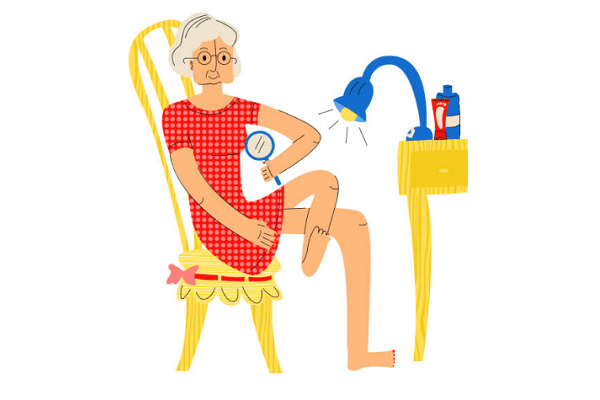Health for a lifetime >>>> What to do with the fungus on the foot?
What to do with the fungus on the foot?

Fungal diseases on the skin are not uncommon, but not the end of the joys of life. On the feet in the area of the feet or between the toes, this disease is more common, since it is the feet that come into contact with the dust on the road in the first place.
Not all skin diseases spread to the entire skin of the body, but in the case of a skin fungus, everything happens according to a different scenario, in which the rate of infection spread is proportional to waiting for the disease “will go away on its own” or to the wrong tactics of getting rid of the fungus on the foot.
The danger of a fungal infection is not that it is difficult to treat, but that it is easily transferred to other areas of the skin. This causes trouble not only because of the continuous itching that captures many areas of the skin of the body, but also due to the fact that the focus of infection becomes visible to others and spoils the appearance. What to do with the fungus on the foot, so as not to spread it to other parts of the body, quickly localize and cure?

Fungus on the foot can take the form of various skin conditions, ranging from abrasions (abrasions) to weeping superficial inflammation. Usually, a fungal infection makes itself felt with an unpleasant itch, but the effect that irritates the nerve endings of the skin and causes itching may not be felt. The fungus on the skin of the foot and, in particular, in the area of the foot, is itchy if its focus is in the area of sweat - the area of the skin affected by the fungus becomes wet and begins to itch.
The success of getting rid of the fungus on the foot depends on several rules of conduct in case of suspected fungal disease.
- First, any irritation on the skin in the area of the feet that does not show signs of healing for more than two days should be considered as a suspicion of a fungal infection, even if the skin is not itchy. Diagnosis by a dermatologist is required.
- Secondly, you should not change a pair of street shoes and a pair of indoor shoes for another one, unless you want to get rid of all pairs of shoes that were worn at the onset and during the development or treatment of the disease. It is worth banning other family members and guests from wearing your slippers if any foot infection is suspected. All pairs of shoes that were supposedly used two weeks before the onset of visible signs of infection and then during the period of its treatment must be treated from the inside with a shoe fungus spray or wiped from the inside with special antifungal wipes. If the shoes are washable or launderable, they are laundered with a disinfectant . The procedure for processing those shoes that are in the process of being worn is repeated daily during the period of detection of the infection and its treatment.
- Thirdly, you need to stock up on several pairs of socks that will change during the treatment process and will be washed in a certain way (taking into account the presence of a fungal infection) - using a disinfectant soap or adding a disinfectant to the washing water. Socks will not have to be put in the common laundry basket, but washed and dried separately from other things.
- Fourthly, an unpleasant feature in case of suspected foot fungus and in the process of treating foot fungus will be the need to walk around the house and sleep in socks. This will keep your bedding free of fungus and prevent fungal infections from being passed on to anyone who shares a bed with you, shares a couch, or simply walks barefoot on the floor or carpet.
- Fifth, you need to have a separate foot towel, which will be separate from other household items, both your own and belonging to the rest of the family.
- Sixthly, the legs will have to be washed separately from the rest of the body (in a basin to which drying agents are added - herbal infusions from oak bark and other medicinal plants containing tannins). The basin after washing the feet must be rinsed in a disinfectant solution containing chlorine as a component. After taking a shower for the whole body, it will be necessary to treat the bath or floor in the shower stall with a disinfectant solution.
A fungal infection of the skin can be treated quickly only if the type of fungus that has affected the skin is accurately determined. For this reason, you should not self-medicate with antifungal drugs at your own risk. With the wrong choice of an antifungal agent (even with an indication of its versatility), you can, at best, delay treatment for years, and at worst, turn an acute fungal skin disease into a chronic fungal infection.

Read

Read



























